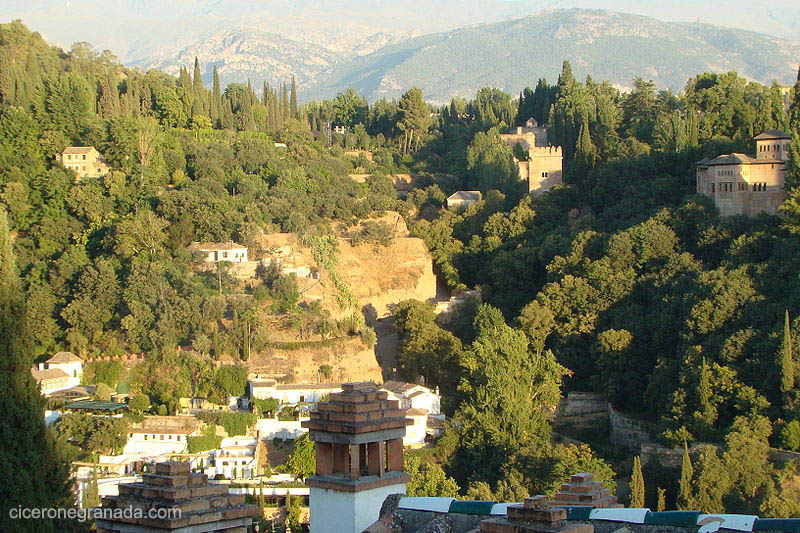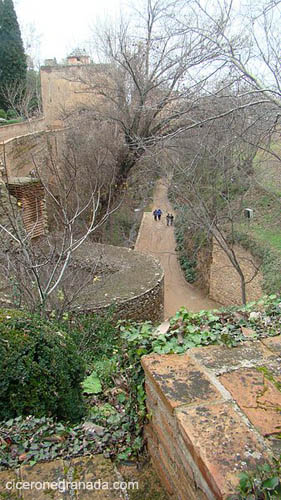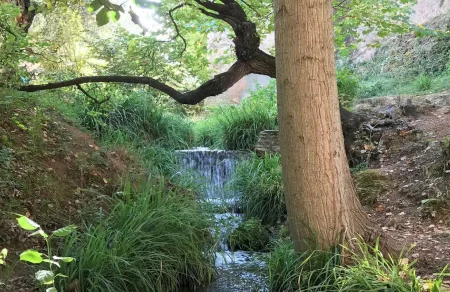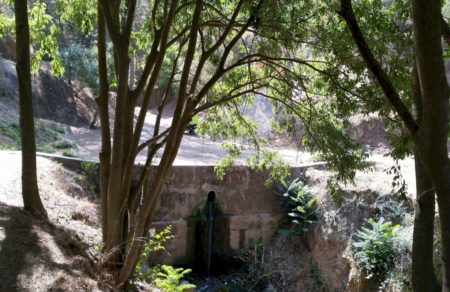One of the most curious and intriguing streets for people who visit Granada is the Cuesta de los Chinos. It is one of the pedestrian access points used to enter the Alhambra and Generalife monumental complex, connecting the hill of the Sabika, where the Red Fortress rises up, to the centre of Granada and the Albayzín from Paseo de los Tristes. It’s special charm stems from being, in spite of being nestled just in the epicentre of history, seemingly immune to the passage of time. Walking almost alone between its streams, taking in the walls and letting it enchant you with the sound of chirping birds, it is a trip to a peaceful and silent past, in the heart of the most visited monument in Spain.
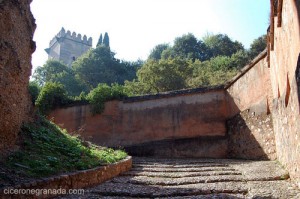
The hill goes up the old Barranco de la Aikibía, a haven of peace and tranquillity separating the hills where the Alhambra and the Generalife Tours rest. Until well into the 20th century, when the current bridge was built connecting the lower area of the Generalife and the access pavilions to the upper area of the Alhambra’s medina, there was no direct connection between the Alhambra and the summer almunia (a type of Andalusian rural building) for the Nasrid monarchs. For centuries, the natural crossing between both places was done via the Cuesta de los Chinos.
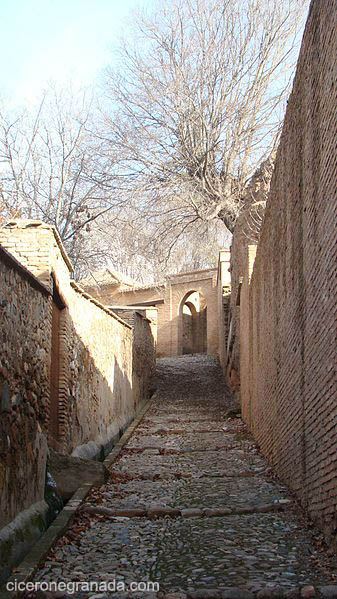
The walkway provides us with some spectacular views of the Torres de la Alhambra, from the bottom. Located between the vegetation and water of the streams, the Torre de las Damas del Partal, the Torre del Qadí, and the Torre de la Cautiva can been seen, more imposing and more majestic than ever. Before getting to the half-way point of the path, we find the Puerta de Hierro, which provides access to a stable complex and to the Puerta del Arrabal, below the Torre de los Picos. In Nasrid times, it was the original exit from the Palaces if you wanted to go to the Generalife. At almost
the same height, but on the left hand side of the hill, as you go up, there is an Nasrid alley that’s closed by a gate that leads to the Palacio del Generalife, crossing through the gardens. This walkway is very well conserved.
The hill continues on following the wall, beside a stream which is excess irrigation water run off flowing down from the palace complex, until passing under the aqueduct at the entrance to the Acequia Real a la Alhambra and letting out near the Torre de los Siete Suelos, which was the common way of accessing the medina from the Alhambra, and from where the Christian troops entered after the surrender of the city, led by Queen Isabella.


